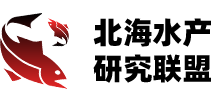

作者:Maroti Upare
编译:王月琴、
责编:左璇
备注:王月琴和左璇均为中国农业科学院农业信息研究所在读博士研究生;。
出处:FAO《Review of the current state of world aquaculture insurance》
本文有作者版权保护,转载请务必注明出处。
1995-2004年间,日本水产养殖产量从略低于140万吨下降到130万吨以下。从产量上看,紫菜、太平洋牡蛎和扇贝是主要的品种。2004年,日本主要的水产养殖鱼类是琥珀鱼和银鲷,产量分别为15万吨和8.1万吨。2004年日本水产养殖的产值远远低于1995年,1995年的产值超过了56亿美元,2004年下降到42亿美元。近十年,银鲷和鳗鱼的总产值减少了一半。 2004年,日本琥珀鱼仍然是最有价值的品种,总产值达12亿美元。日本渔业部门的就业人数从1995年的30.1万人下降到2004年的23万人。由于日本的统计数据并未区分捕捞渔业和水产养殖,因此水产养殖产业中就业人数所占份额还不得而知。
一、保险市场
日本在《渔业损害赔偿制度》下开展水产养殖保险。《渔业损害赔偿制度》既是互助制度,也是政府渔业损害救助政策的重要组成部分。该制度主要是用来保障和分散渔民由于意外事故造成的损害风险。
为了实现这一制度目标,政府目前向渔民和水产养殖者提供以下援助:
政府向参与渔业相互保险计划的渔民和水产养殖户提供部分保费补贴。这种补贴适用于养殖规模低于一定水平的渔民和水产养殖户。
如果巨灾造成的损失超出了渔民和水产养殖户互助保险计划(的承受能力),则政府保险计划可以通过与全国渔业互助保险协会的后续合同来赔偿这些损失(不包括渔具保险)。
政府补贴渔业互助保险机构的部分管理费用,包括该计划管理人员的工资。
政府对赤潮这类特殊保险合同保险费的三分之二给予补贴,以抵消其造成的损失,这些补贴包含在水产养殖保险计划中。
政府还向给渔业互助保险机构提供贷款的农林水产信贷基金提供担保资金。
目前有效的保单数量尚不清楚,但据估计许多保单正在实施中。渔业部门报告称,2004年,按照产量计算,37%的鱼类和甲壳类水产养殖以及按市值计算超过70%的海藻和贝类养殖被保险覆盖。2004年承保的水产养殖总产值估计超过6亿美元。尤其是大部分的黄金鲅鱼、鱆红鱼和海鲷被纳入保险范围。此外,2004年,牡蛎和珍珠贝生产也涵盖在保险范围内,这些被保的品种产值估计为7800万。以下是2003年主要品种的水产养殖场数量:黄金鲅鱼(1 029),海鲷(1 012),比目鱼(244),其他鱼类(463),扇贝(3 858),牡蛎(3 308),海藻(超过10 000)和珍珠贝(超过2 000)。一个相当保守的估计是,水产养殖保险至少覆盖了3 000个养殖场。
三、承保风险
日本的水产养殖保险是一种特定灾害(named-peril) 险。有两种类型的水产养殖保险单:一种是承保养殖期中因死亡或逃逸而造成的部分和全部损失;另一种是承保养殖期中水产设施的毁坏、损耗和沉塘。关于第二种类型,通常使用“可保损失”一词,指的是当被保设施部分损坏时以及该设施全部修复的费用预计高于保险金额的一半时,全部损失由保险承担。
一般来说,如果发生的损失属于以下类别,则不在承保范围内:
由战争或类似骚乱造成的损失;
盗窃造成的损失;
由于排放或泄漏污水、废液及其他对养殖有害的物质造成的水污染而造成的损失;
因被保人或第三方的疏忽而造成的损失;
过度赤潮造成的损失(购买赤潮特殊保险合同的除外)。
如果水产养殖保险计划的水产养殖者参与了特殊保单,该保单规定了保险公司之前指定水域的赤潮造成损害的承保范围,则因过度赤潮造成的损害就会得到赔付。在这个特殊的保单中,过度赤潮指的是以下任意一种情形:
赤潮持续十天及以上;
赤潮导致某一水域内超过一半的养殖品种死亡;
对浮游生物的范围、种类或密度的科学观测,本合同承保过度赤潮与普通赤潮不同。
此外,日本还试点启动了一项特殊的水产养殖保险计划,覆盖紫菜、裙带菜和海带等海藻类,承保由于这些产品的市场价格突然下降而造成的经济损失。
原文:
In Japan, aquaculture productiondecreased slightly between 1995 and 2004, from just below 1.4 million tonnes tounder 1.3 million tonnes. Laver Nori, Pacific cupped oyster and Yesso scallopare the main species produced in terms of volume. Japanese amberjack and silverbream were the main aquaculture fish species in 2004, with production volumesof 150 000 tonnes and 81 000 tonnes, respectively.
The value of Japan’s aquaculture production in 2004 isconsiderably lower than in 1995. In 1995 the value added up to over US$5.6billion, which decreased to US$4.2 billion in 2004. The total production valuerealized by silver bream and Japanese eel decreased by half over this decade.Japanese amberjack remained the most valuable product in 2004, with a totalvalue of US$1.2 billion.
Employment in the fisheries sector in Japan decreasedfrom an estimated 301 000 in 1995 to 230 000 in 2004. As Japanese statisticsreported do not distinguish between capture fisheries and aquaculture, theshare of aquaculture in this employment figure is unknown.
THE INSURANCE MARKET
In Japan, aquaculture insurance is offered under the Fishery Damage Indemnification System. The Fishery Damage Indemnification System is both a mutual aid system and an important part of the nationalgovernment’s fishery damage assistance policy. The system was originallyde signed to rationally insure fisher folk against damages due to contingencies,and to spread the risks among them.
To achieve the objectives of this system, the governmentcurrently provides the following assistance to fisherfolk and aquaculturists:
Government subsidies are granted to fisherfolk andaquaculturists participating in the Fishery Mutual Insurance Scheme to cover apart of their premium payments. This subsidy is available to those whose scaleof fishing or aquaculture operations are below a certain level.
In case of damages due to catastrophic disasters considered to be beyond fisherfolk and aquaculturists’ mutual aid schemes, the government insurance scheme may cover such damages by a retrocession contract with the National Federation of Fishery Mutual Insurance Associations(excluding Fishing Gear Insurance).
The government assists the fishery mutual insuranceinstitutions by providing subsidies to cover a part of their administrationexpenses, including the wages of employees needed for managing the scheme.
The government grants subsidies of up to two-thirds ofthe premium of special insurance contracts against damages by red tide, whichare included in the Aquaculture Insurance Scheme.
The government also provides support in guarantee capitalto the Credit Fund for Agriculture, Forestry and Fisheries, which extends loansto the fisheries mutual insurance institutions for running their insuranceoperations in support of the sector.
POLICIESCURRENTLY IN FORCE
The exact number of policies in force is not known, butit is estimated that many policies are in operation. The Fisheries Agencyreported that 37 percent of the fish and crustacean aquaculture and over 70percent of the seaweed and shellfish culture in terms of value of the outputgenerated was covered by insurance in 2004. The total value of aquacultureproduction insured in 2004 was estimated at over US$600 million. In particular,a large part of the yellowtail, kanpachi and seabream culture wasinsured. Moreover, in 2004, oyster and pearl oyster production was generallycovered by insurance as the insured value of these species was estimated at 78million.
The following are the reported numbers of aquaculturefarms in 2003 for the main species: yellowtail (1029), seabream (1012),flatfish (244), other fish (463), scallop (3858), oyster (3308), seaweeds (over10000) and pearl oyster (over 2000). A fairly conservative estimate would bethat at least 3000 farms are covered by aquaculture insurance.
PERILS COVERED
Aquaculture insurance in Japan is "named perils" insurance. Two types of aquaculture insurance policies can be distinguished: one that addresses partial and total loss by death or escape ofthe cultured products during the culture cycle, and one that addresses damage,losses and sinking of aquaculture facilities while in operation. With regard tothe second type, one often uses the term "insurable damages", whichmeans that when the insured facility is partially damaged and in cases when thecost of full recovery of the facility are expected to be higher than a half ofits insurable value, the total loss is covered by the insurance.
In general, damages are not covered by the insurance ifthey fall under these categories:
damages caused by war or similar disturbance;
damages caused by loss by theft;
damages caused by contamination of water due to thedischarge or leakage of sewages, waste fluids and other substances harmful tothe cultured products;
damages caused by negligence of the policy-holder or bythird parties;
damages caused by excessive red tides (excluding thoseunder a special contract for red tides).
If an aquaculturist participates in the AquacultureInsurance Scheme under the special policy that specifies coverage of damagescaused by red tides in waters previously designated by the insurer, the damagesdue to excessive red tides are covered by this scheme. In this special policy,an excessive red tide is defined by any one of the following conditions:
the period between the appearance and the disappearanceof red tide is ten days or more;
the red tide causes mortality of more than half of thecultured products within the specified waters;
it is acknowledged that the red tide in question isdifferent from ordinary red tides based on scientific observations of itsextent, species or density of plankton.A specific Aquaculture Insurance Scheme was alsoinitiated to cover losses and damages to cultured seaweeds, such as laver,undaria and kelp. This specific scheme also covers financial losses due to thesudden declines in market prices for these products.
END
关注农业保险价值传播
 友情链接
友情链接